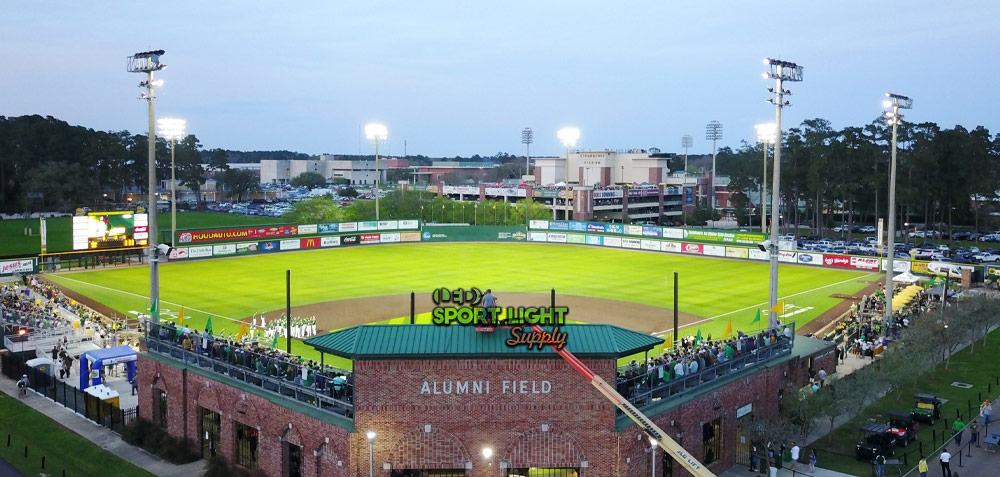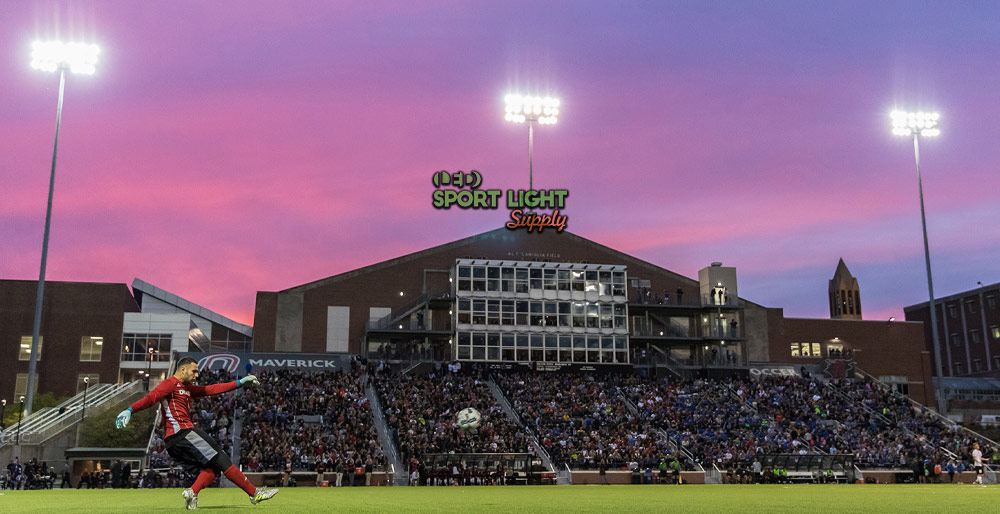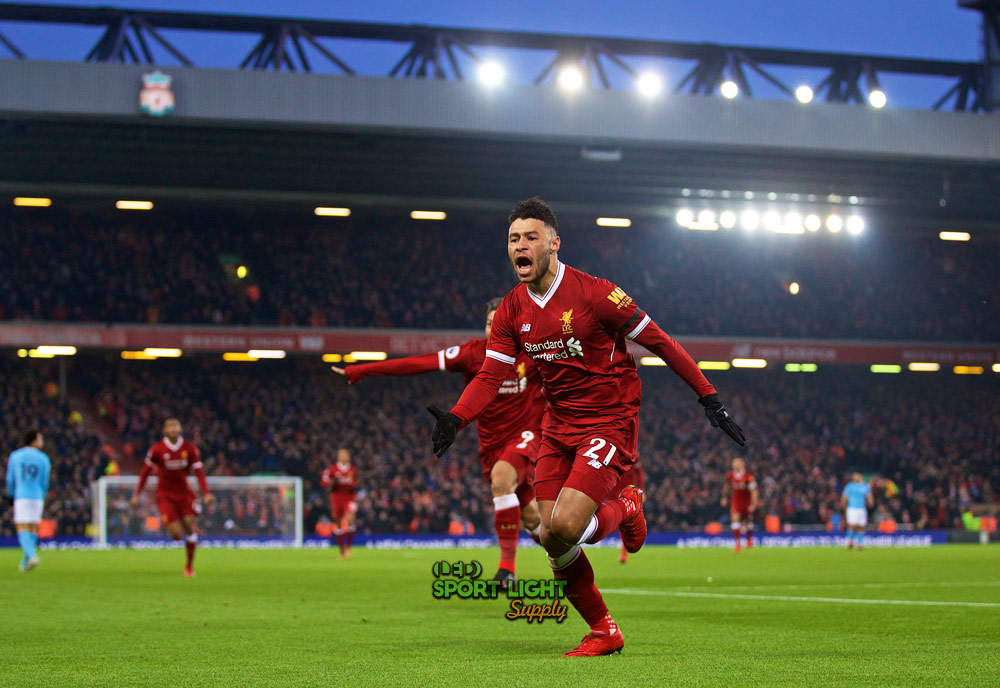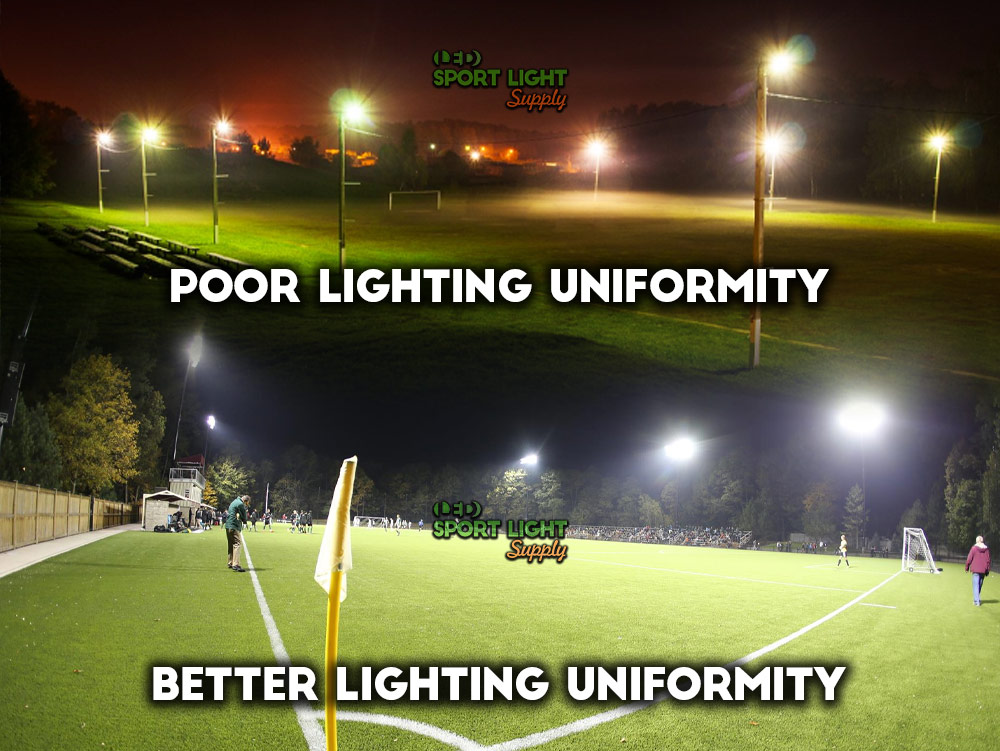The latest advancements in floodlight technology leverage LED lighting systems, commonly recognized for sports lighting. However, these systems are not limited to sports; they illuminate large venues such as stadiums, stations, and airports. Effective lighting is essential during sports events, not only to enhance the spectator experience but also to ensure safety and security. Below is a brief guide to the key components of an LED lighting system and their importance.
Table of Contents
ToggleConstituents of a LED Lighting System
LED Lighting Fixture

The primary function of the LED lighting fixture is to ensure both quality and uniformity of the light. High-quality LED lights maintain the integrity of the illuminating spectrum, providing even lighting throughout a stadium or large area. Specifically, the white light seen in stadiums is a combination of various wavelengths that create a uniform white effect. LED technology relies on these precise wavelengths to produce specific lighting effects.
Both outdoor and indoor LED lighting systems share similarities, although there are key differences. The most common fixture used is the pole-top luminaire, which houses the LED lamps. These systems maximize light efficiency, utilizing up to 90% of what traditional metal halide fixtures emit. Additionally, LED lights are energy-efficient, emit no ultraviolet or infrared radiation, and have a much longer lifespan than conventional systems.
High Mast Light Pole or Lamp Mounting Pillars

A sturdy high-mast pole is essential for supporting sports lighting systems. These poles serve several purposes, including housing the wires, electrical components, lightning grounding system, and a precast concrete base. Typically made of galvanized steel, these poles undergo rigorous testing to ensure durability, energy efficiency, and minimal light spillage.
Designing a proper lighting system for stadiums requires adherence to specific regulations, which vary depending on the level of competition. For amateur sports, local sports association guidelines may be sufficient, while international events follow stricter standards. Light poles typically range in height from 9 to 15 feet, depending on the size of the venue and the wind resistance required. Engineers must carefully calculate these factors to ensure the poles can withstand environmental pressures.
Lighting Control System (DMX/DALI)
The effectiveness of high-power LED lights depends on the lighting control system. DMX (Digital MultipleX) and DALI (Digital Addressable Lighting Interface) are two commonly used protocols for managing LED sports lighting systems.
DMX, originally developed for use in theaters and entertainment venues, is designed to control intelligent lighting fixtures and special effects. It has expanded into commercial use, enabling control over light temperature, color, and RGB.
DALI, outlined in the international standard IEC 62386, ensures interoperability between control devices in digitally managed lighting systems. A DALI master can manage up to 64 devices on a single line, with the ability to control individual lights or groups of lights based on specific needs. This allows for more precise control and adaptability in large lighting systems.
| Protocol | Functionality | Usage |
|---|---|---|
| DMX | Controls intelligent lighting and effects | Theaters, entertainment, commercial buildings |
| DALI | Manages control devices in lighting systems | Commercial, stadium, and large facilities |
User Interface
Controlling the LED lights in a stadium helps to reduce operating costs and maintain flexibility depending on the event. Different sports and competition levels require varied lighting conditions, with higher competition levels demanding more sophisticated lighting. Stadium owners can manage these systems using traditional physical panels, control rooms, or via remote options such as smartphones and computers through dedicated apps.
Light pollution is another critical factor in stadium lighting. High-intensity lighting used for sports events can affect surrounding areas if not controlled properly. Adjusting the lighting slope and pole height can help reduce light spillage, benefiting both the venue and the local community. Effective light control systems also allow adaptation to changing weather and other unforeseen circumstances.
Other Components
Ensuring safety and ease of maintenance is key when dealing with high-power lighting systems installed at considerable heights. Several additional accessories can enhance the performance and longevity of these systems.
For example, bird control spikes prevent birds from roosting on LED fixtures, which is important as LED lights do not become excessively hot, making them attractive to birds. Other accessories, such as pointing devices or adjustable rings, can help fine-tune the direction and intensity of light to match specific needs.
| Component | Purpose |
|---|---|
| Bird Control Spikes | Prevents birds from damaging fixtures |
| Pointing Devices | Adjusts light direction and slope |
These components, along with proper maintenance, are vital to ensuring that the lighting system performs optimally in both outdoor and indoor environments.
Importance of a Good Lighting System Design & Planning
Better Visibility for Sports Players and Cameras

In sports, visibility is crucial. Poor lighting can lead to complaints from both players and fans, and in the case of televised events, inadequate lighting can create issues for broadcasting. A well-designed lighting system ensures that the field is properly illuminated, improving the experience for athletes, spectators, and cameras alike. For stadium owners, effective lighting design is critical for the success of sporting events and maintaining relationships with sponsors, especially when games are aired on national television.
Brighter, More Uniform Lighting for Stadiums

Achieving brighter, more uniform lighting across a stadium is a major goal of any LED lighting system. In common four-pole configurations, where a pole is placed at each corner of a rectangular playing field, the light must be carefully distributed to cover each quadrant without shadows or dark spots. The result is consistent, high-quality illumination that enhances visibility for players and spectators while ensuring there are no dim or unevenly lit areas on the field.
Reduced Running and Maintenance Costs
Although LED lighting systems may come with a higher upfront cost compared to traditional systems, they offer significant long-term savings. The lower energy consumption and minimal maintenance required for LED fixtures make them a cost-effective option over time. LED lights have a much longer lifespan than traditional lighting solutions, reducing the need for frequent replacements. Additionally, the advanced control systems available with LED technology allow for precise adjustments, further improving efficiency and reducing operating costs.
| Benefits | LED Lighting System | Traditional Lighting System |
|---|---|---|
| Energy Consumption | Lower | Higher |
| Maintenance Cost | Reduced | Higher |
| Lifespan | Longer | Shorter |
| Light Quality | Brighter, more uniform | Less uniform, more shadows |
Investing in a well-designed LED lighting system not only enhances the overall experience for players, spectators, and broadcasters but also reduces long-term expenses, making it an ideal solution for modern stadiums.
Conclusion
A well-designed LED lighting system is essential for enhancing visibility, ensuring uniform lighting, and reducing long-term costs in stadiums. By investing in the right technology, stadium owners can provide an optimal experience for athletes, fans, and broadcasters while benefiting from energy efficiency and minimal maintenance. Proper planning and implementation of lighting systems are key to the success and sustainability of modern sports venues.
